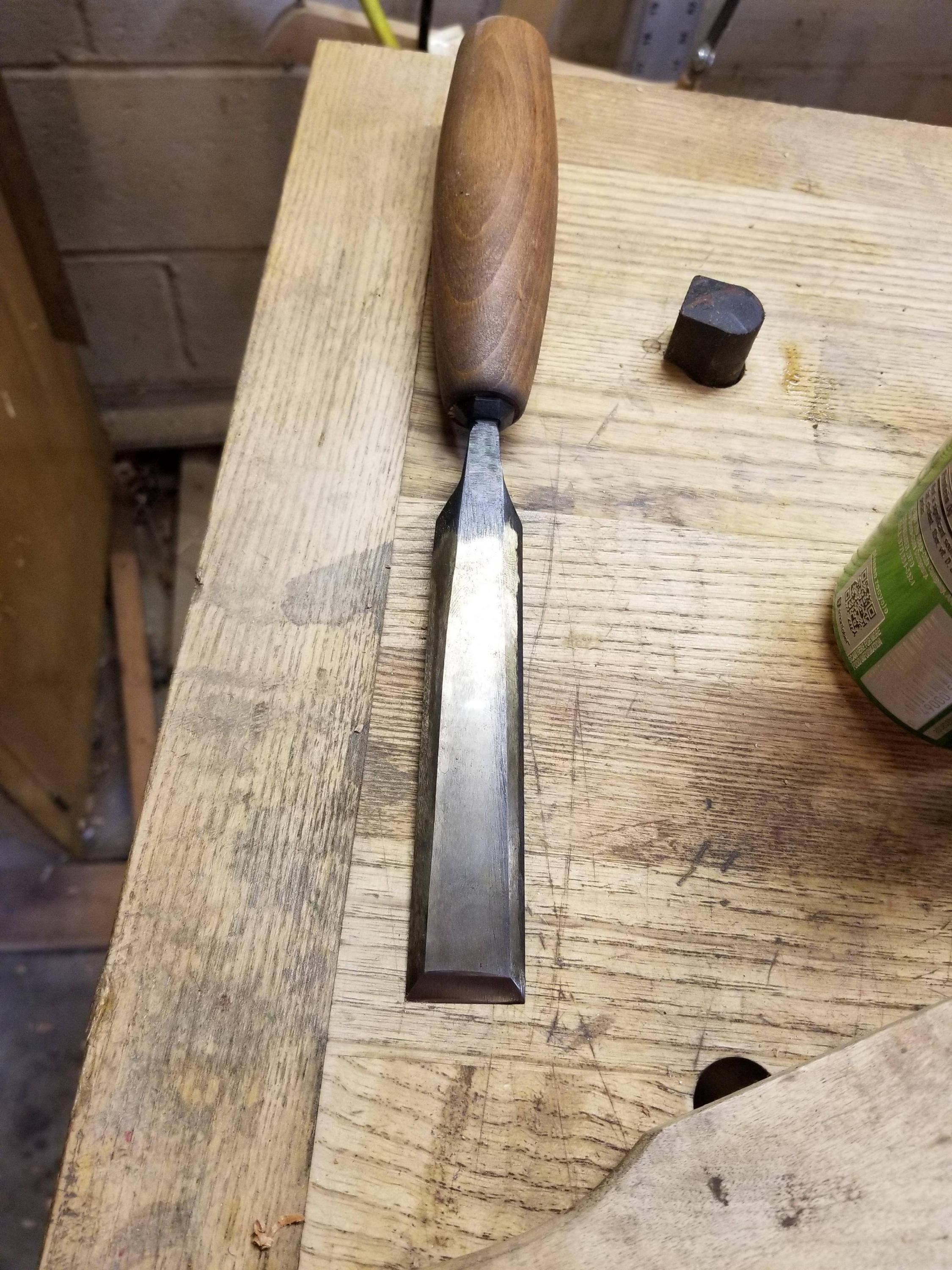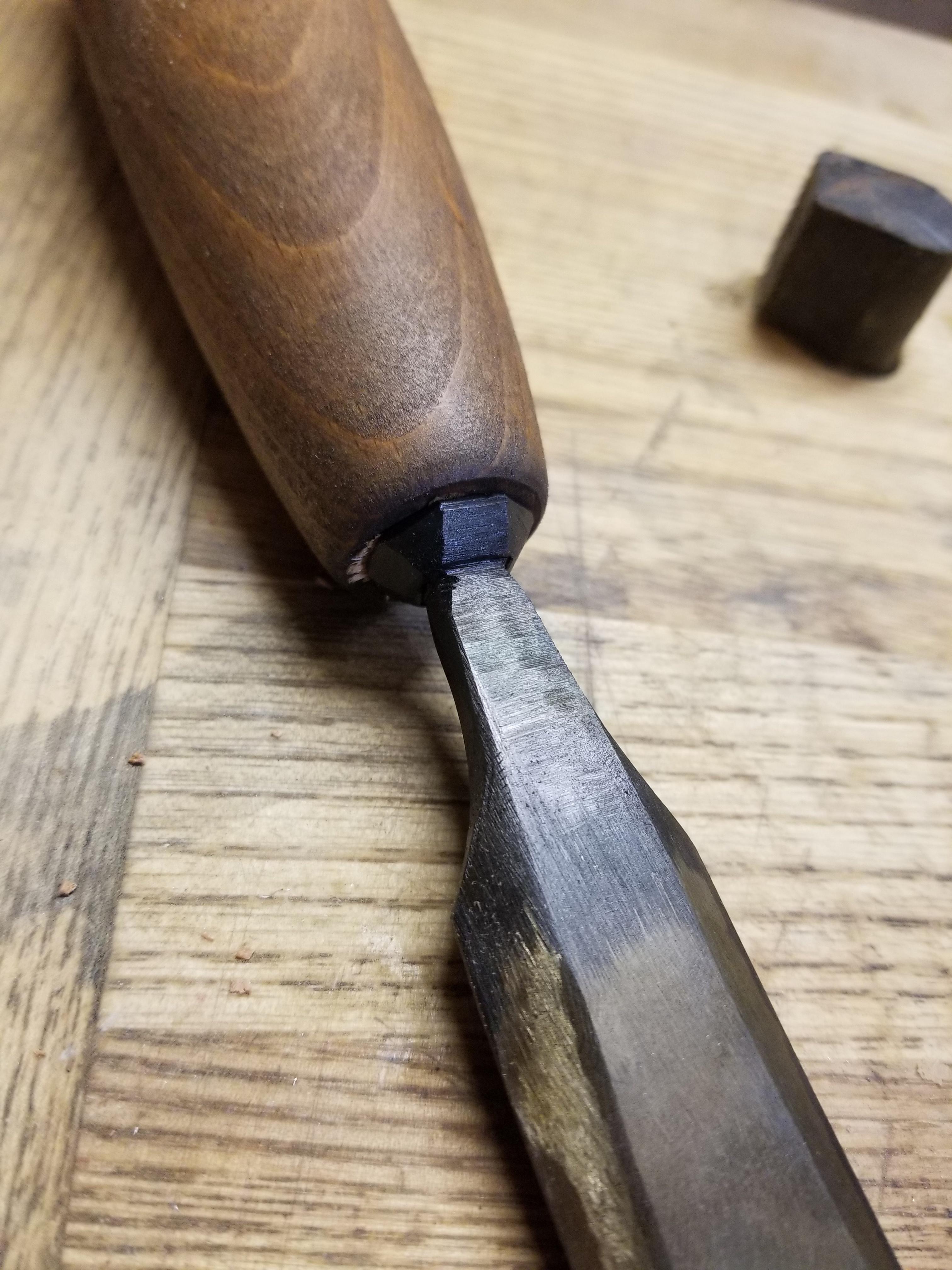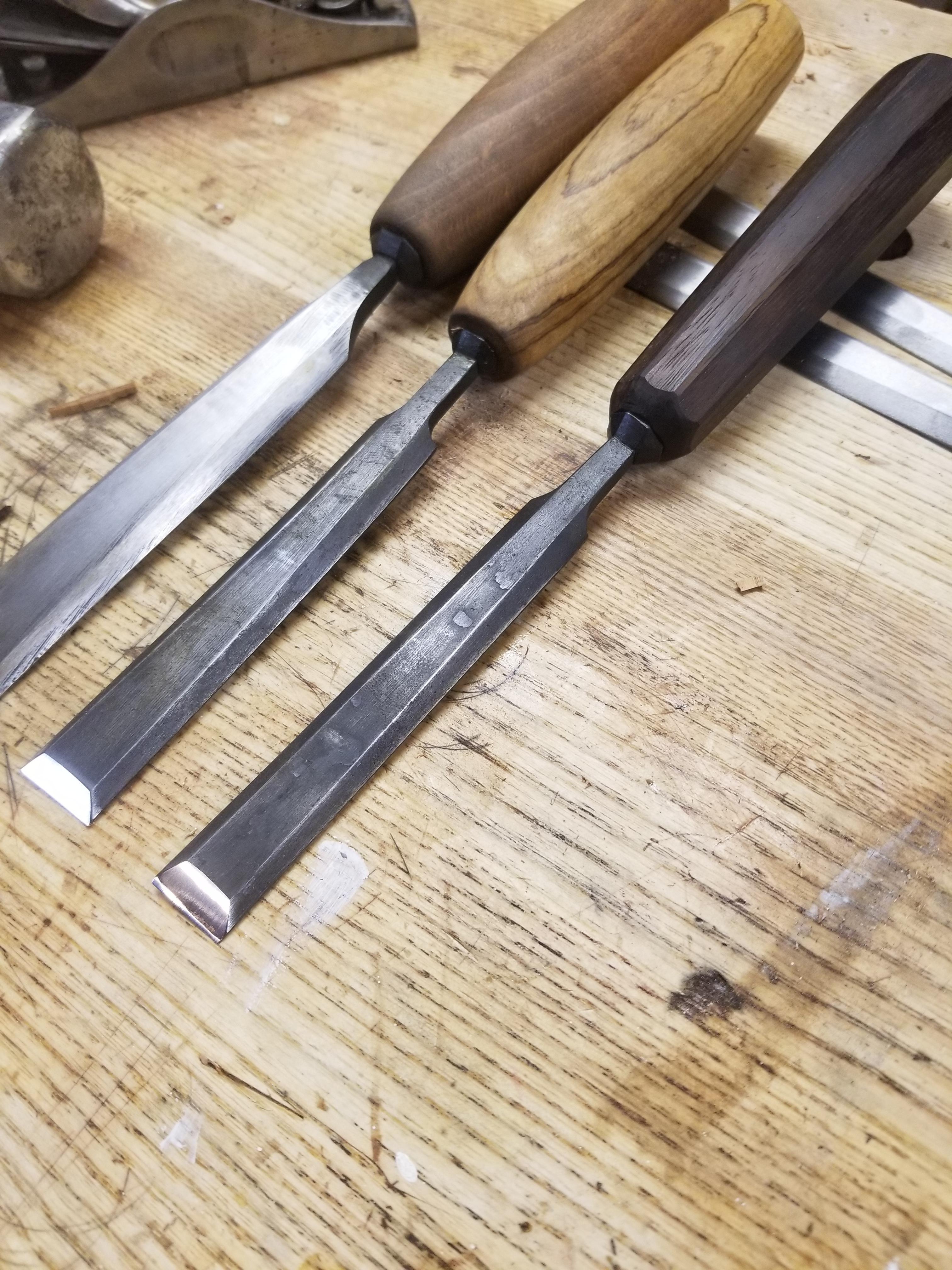I have a long (short?) history of trying to figure out how to make ideal tools - like ones that you'd choose to use over tools that are purchased.
Before the whole unicorn thing last year, I got a fascination with making a chisel that had both excellent edge holding and terrible wire edge holding properties (as in, one that you could sharpen on a washita and the wire edge would sort of fall off without ever being organized).
I also remembered that files are generally the plainest steel one is likely to find cheaply (in a used file), but I've snapped a file or two, so I got the idea that maybe they should be hammered mostly to shape and then I could finish them by grinding and by hand. I've also read in some literature that files are more durable if the carbides are left large, and this is something we don't so much want for woodworking (all though they're probably not *that* large*
So, I made one, and then gave it away expecting to make more, and finally made a second this past weekend. I don't want these chisels to look like they're amateur made, so I'm experimenting with ways that a guy with limited tools can get a bolster on the chisel, and that turns out so far to be a mild steel bolster drilled and filed just undersized and then heated and hammered onto the chisel tang so that it shrinks the to tang (high carbon steel cracks if you do this...i found that out the hard way).
Having made two now, I have a better idea how to get the aesthetics right and will safe edge a file for the bolsters.
The cutting properties of these are superb - they remind me more of japanese chisels than western chisels in terms of how the edge properties are, but they're long and light like an older English chisels. It takes about two or three hours to make one this way, steps as follows.
* belt sand the teeth off of a file (teeth could have anything in them)
* cut the end of the file off with a grinder and rough further in to the file for the tang
* heat and hammer the chisel to rough shape (now it's annealed)
* belt sand the scale off
* shape by hand most of the rest of the way with a vixen body file and a mill file
* find suitable mild steel plate and cut a hole in the bolster blank, then file it square until it fits the tapered tang
* cut the bolster loose, and then heat it to bright and hammer it onto the tang
* file the bolster
* heat treat (oil is fine), temper and then install a handle (I like the burn in method) - you can heat the tang but not threaten the chisel by holding the chisel in a wet rag when heating the tang
They seem to come out a little harder than O1 or 1095, and they can warp a little bit which requires more additional work, but they grind (file steel really sparks intensely) and hone really nicely and have extremely good edge holding.


both of the chisels that I've made have better properties (sharpening and letting go of the wire edge and then holding an edge longer without being brittle) than any commercial chisel that I've gotten aside from japanese, and it makes me wonder why that is. I think it's likely that the steel that's in files is so plain that manufacturers have zero interest in dealing with its warping in heat treat.
The two files that I made were with a chisel marked "heller" and "india". I've since bought a lot of used old chisels off of ebay (they're only a dollar or two that way, and the file and gas used to make each one is probably less than $10). I've ground the teeth off of two more, another heller and an old nicholson. Even on a slow belt sander, the sparking lets you know that they're very plain and high carbon - it comes off in a shower and almost makes a flame at the point where the sparking is coming off of the tool - and when it's kind of flame because of the intensity, it will actually make a small cloud of smoke.
I see a lot of videos of turners grinding skews out of files and having broken some and looked at the steel (it isn't fine like razor steel), I can only guess that some of those break - it's worth going the extra mile and hammering the steel to try to refine it a little bit.
(used saw files make superb marking knives, too - same cutting properties and baiscally same method - grind the teeth of, smash them to rough shape on an anvil and then refine, harden, temper and sharpen.
Before the whole unicorn thing last year, I got a fascination with making a chisel that had both excellent edge holding and terrible wire edge holding properties (as in, one that you could sharpen on a washita and the wire edge would sort of fall off without ever being organized).
I also remembered that files are generally the plainest steel one is likely to find cheaply (in a used file), but I've snapped a file or two, so I got the idea that maybe they should be hammered mostly to shape and then I could finish them by grinding and by hand. I've also read in some literature that files are more durable if the carbides are left large, and this is something we don't so much want for woodworking (all though they're probably not *that* large*
So, I made one, and then gave it away expecting to make more, and finally made a second this past weekend. I don't want these chisels to look like they're amateur made, so I'm experimenting with ways that a guy with limited tools can get a bolster on the chisel, and that turns out so far to be a mild steel bolster drilled and filed just undersized and then heated and hammered onto the chisel tang so that it shrinks the to tang (high carbon steel cracks if you do this...i found that out the hard way).
Having made two now, I have a better idea how to get the aesthetics right and will safe edge a file for the bolsters.
The cutting properties of these are superb - they remind me more of japanese chisels than western chisels in terms of how the edge properties are, but they're long and light like an older English chisels. It takes about two or three hours to make one this way, steps as follows.
* belt sand the teeth off of a file (teeth could have anything in them)
* cut the end of the file off with a grinder and rough further in to the file for the tang
* heat and hammer the chisel to rough shape (now it's annealed)
* belt sand the scale off
* shape by hand most of the rest of the way with a vixen body file and a mill file
* find suitable mild steel plate and cut a hole in the bolster blank, then file it square until it fits the tapered tang
* cut the bolster loose, and then heat it to bright and hammer it onto the tang
* file the bolster
* heat treat (oil is fine), temper and then install a handle (I like the burn in method) - you can heat the tang but not threaten the chisel by holding the chisel in a wet rag when heating the tang
They seem to come out a little harder than O1 or 1095, and they can warp a little bit which requires more additional work, but they grind (file steel really sparks intensely) and hone really nicely and have extremely good edge holding.


both of the chisels that I've made have better properties (sharpening and letting go of the wire edge and then holding an edge longer without being brittle) than any commercial chisel that I've gotten aside from japanese, and it makes me wonder why that is. I think it's likely that the steel that's in files is so plain that manufacturers have zero interest in dealing with its warping in heat treat.
The two files that I made were with a chisel marked "heller" and "india". I've since bought a lot of used old chisels off of ebay (they're only a dollar or two that way, and the file and gas used to make each one is probably less than $10). I've ground the teeth off of two more, another heller and an old nicholson. Even on a slow belt sander, the sparking lets you know that they're very plain and high carbon - it comes off in a shower and almost makes a flame at the point where the sparking is coming off of the tool - and when it's kind of flame because of the intensity, it will actually make a small cloud of smoke.
I see a lot of videos of turners grinding skews out of files and having broken some and looked at the steel (it isn't fine like razor steel), I can only guess that some of those break - it's worth going the extra mile and hammering the steel to try to refine it a little bit.
(used saw files make superb marking knives, too - same cutting properties and baiscally same method - grind the teeth of, smash them to rough shape on an anvil and then refine, harden, temper and sharpen.




































